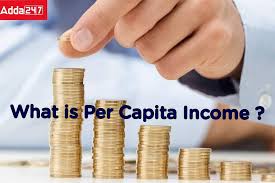Taxes on self-employment are due if your net self-employment income is $400 or more, whether you are self-employed as a business owner, freelancer, or independent contractor. In this guide, you’ll learn more about how to calculate self-employment tax and the difference between self-employment vs income tax.
Understanding Self-Employment Tax
Self-employment tax is the combination of Social Security and Medicare taxes that largely affects people that are CEOs of their businesses. Social Security and Medicare taxes, which are deducted from the wages of the majority of workers, are an example of this type of tax.
Employers estimate Social Security and Medicare taxes for the vast majority of wage employees. On the other hand, you calculate your own taxes (SE taxes) by filling out Schedule SE (Form 1040 or 1040-SR). It’s possible to subtract from your adjusted gross income the percentage of your SE tax that would have been paid by a company. Social Security and Medicare taxes are not deductible for wage workers.
Self-Employment Tax Rate
In the United States, the self-employment tax rate is 15.3%. For social security, which involves old-age, survivors, and disability insurance, the rate is 12.4%; for Medicare, which is hospital insurance, it is 2.9 percent.
The first $142,800 of your cumulative wages, tips, and net earnings are applicable to any combination of the Social Security part of the tax. The Social Security tax, or railroad retirement (tier 1) tax, in 2022. To prepare for the year 2023, the budget was raised to $147,000. It serves as a reference year’s Schedule SE for SE tax rates.
The 2.9 percent Medicare portion of the employment tax and the Social Security tax will apply to all of your cumulative wages, tips, and net profits for the current year. There is no 12.4 percent SE tax on wages and tips applicable to either the social security tax or the Tier 1 part of the railroad retirement tax if they amount to at least $142,800 and are applicable to both. On the 2.9 percent Medicare portion of the SE tax, on the other hand, the payment must be on all of your net earnings.
Wages, bonuses, and self-employment income earned after December 31, 2012, are subject to an extra Medicare tax rate of 0.9%.
In the event that you select a tax year other than the calendar year, you must apply the tax rate and highest income limit in effect at the start of your tax year. Tax rates and the highest income limits fluctuate during the year but don’t adjust your self-employment tax rate or cap.
How to Calculate the Self-Employment Tax Rate
- To calculate your self-employment tax. Begin the process of figuring out how much tax you owe by calculating your net income from self-employment for the calendar year.
- For tax reasons, net income is often the difference between your self-employment gross earnings and your business expenditures.
- There is a self-employment tax on 92.35 percent of your net self-employment income in most cases.
- Calculate how much of your net self-employment income is liable to tax and then use the 15.3% tax rate as a guideline.
- Even though the Social Security part of the self-employment tax only applies to the first $142,800 ($147,000 in 2023) of income in 2022, it’s important to keep this in mind.
- Remember to check the two tax available procedures in IRS Schedule SE to calculate your net profits, but only if you suffered a loss from self-employment.
Paying Self-Employment Tax: Who Pays For It?
- Taxes on self-employment are due if your net self-employment income is $400 or more, whether you are the boss of your business, a freelancer, or an independent contractor worker. Several people that work for themselves get IRS 1099 forms from their customers that detail the amount of money they got from their customers over the course of the year.
- If you worked for a Christian community and got more than $108.28, you must also pay self-employment taxes.
- One can earn revenue in the same calendar year from a full-time job and self-employment. Nowadays, many people have to juggle a day job and a side business. If a person works in an organization that does not work on weekends and drives for a ride-sharing service on the weekends, he or she may be eligible for both jobs. Income from ride-sharing services is the same as self-employment.
How to File The Self Employment Tax Form
When you’re your own boss, you’ll have to take a few extra procedures to file your taxes.
- To begin, fill out IRS self-employment tax Form 1040 Schedule C to disclose your business’s income.
- For your self-employment tax, complete the IRS Form 1040 Schedule SE.
- The next step is to prepare and submit your tax returns. If you earn money from your own business. Then you need to complete the self-employment IRS Form 1040 when you file your tax return. That’s because you’ll be able to deduct expenditures from your self-employment earnings. Which will lower your tax bill, and this form enables you to do so.
- Getting a Social Security number or an individual taxpayer identification number, or ITIN is necessary to complete your tax return.
- Calculated taxes are also likely to be required. Once a quarter, most self-employed people are required to pay anticipated taxes based on their annual self-employment earnings.
- To avoid owing a large amount of taxes when you file your taxes on April 18. It’s vital to pay sufficient every month to achieve this aim. In most cases, self-employed individuals who estimate to pay $1,000 or more in taxes on their yearly returns will be necessary to submit estimated payments.
- The IRS’ Direct Pay option is the ideal financial decision for these taxes. Moreover, there are options to use a debit or credit card or send IRS a check, or you can transfer money from your account.
Tax Deductions for Self Employed
Tax advantages of being your own boss include the ability to deduct a number of expenses. Cuts down your net income and taxes. Therefore, it is critical that you take benefit of all available tax deductions. The following are among the most crucial:
#1. Expenses for a Home Office
The home office deduction is available to those who work from home. For this, you’ll need to know the size of your work area. Using a home office must also be frequently and solely by the taxpayer. It’s not possible to have an office space and a bedroom in the same room.
#2. Deductions for Travel and Vehicle Use
Travel expenses for business-related seminars and events can be deducted from taxable income. Hotels, auto rentals, and flight tickets can be deducted. If you drive for work, you can reduce a portion of the distance you’ve driven. As well as any maintenance or expenditures.
#3. The Deduction for Meals
Most businesses can deduct 50 percent of the expenses for meals they purchase for their employees. Meals eaten at home are not eligible for a tax deduction.
If you are your own boss, you may be eligible to reduce your health insurance premiums.
#5. Discount on Rent
The expenses you make for commercial space might be deducted from your business’s profits. Deducting the rent you pay for materials or other equipment that you use in your business is very much possible.
Self Employment Tax Vs. Income
The Income: Self Employment tax vs income
Individuals and businesses (taxpayers) are subject to income taxes, which are levied on their taxable income (commonly called taxable income). In the majority of cases, income tax is calculated by multiplying the tax rate by total taxable income. A taxpayer’s tax rate may differ based on his or her individual qualities and the source of their income.
As taxable income rises, so does the tax rate. As a general rule, corporations are subject to corporate tax, which is often collected at a flat rate. There are many ways in which a person’s individual income might be subjected to progressive taxation.
The Self-Employment Tax: Self-Employment tax vs income
In most cases, self-employed individuals are required to pay both income tax and self-employment tax (SE). For those that are their own bosses, the SE tax is a combination of the Social Security and Medicare taxes. Social Security and Medicare taxes are deductible from the wages of the majority of workers. They are an example of this type of tax. Social Security and Medicare taxes are the only taxes referred to as self-employment tax (like income tax).
For you to figure out if your business has a net income or loss, you must first find out if you are self-employed. Subtracting your company’s expenditures from its revenue is how you arrive at this number. Your net profit, which is the difference between your income and costs, appears on page 1 of your Form 1040 or 1040-SR. If your spending exceeds your income, you’ll be out of money. On the first page of Form 1040 or 1040-SR, you can normally deduct your losses from gross income. However, your loss may be minimized in some circumstances.
What Happens if You Dont File Self-Employment Taxes?
It’s a federal and state offense to fail to record self-employment income. tax evasion in this manner. Taxpayers who fail to pay their taxes are subject to a penalty fee, interest on the unpaid amount, and the possibility of imprisonment.
Why Is the Self-Employment Tax So High?
Because the Internal Revenue Service sees entrepreneurs as both employers and employees. As a result, the tax rate rises.
How Does the IRS Know if You Are Self-Employed?
They get to know through Independent contractors because it is their responsibility to keep track of their business profits and losses by completing Schedule C (Form 1040). (Sole Proprietorship). If your net self-employment income is $400 or more, you must also submit Schedule SE (Form 1040), and Self-Employment Tax.
What Are Six Disadvantages of Self-Employment?
- Uncertainty in earnings
- No employee benefits
- Hours of work could be very long.
- Increased strain and accountability.
- Lack of organization.
- There is a risk of losing.
- There will be more tax paperwork to deal with
Why Is Self-Employed Tax So High?
Being self-employed means paying a 15.3 percent Social Security and Medicare tax on top of the regular federal, state, and local income taxes you would otherwise owe. The Internal Revenue Service treats business owners as both employees and employers, whereas W-2 employees “share” this rate with their companies. This justifies the higher tax rate.
Is It Better to Be Self-Employed or LLC?
While it’s impossible to completely avoid paying self-employment taxes, doing so through a company or an LLC can result in significant annual savings. A person’s personal assets are shielded from a lawsuit if an LLC is formed. To avoid paying taxes on your own income as a sole proprietor, you can have your limited liability company be treated as a S corporation for tax purposes.
How Much Is Self-Employment Tax 2023?
In 2023, the percentage for those who are self-employed in California is 15.3 percent. Remember that your Medicare and Social Security payments are included in this total. Self-employed individuals, in addition to paying the standard income tax rates, must pay the full 15.3% of these taxes.
Conclusion
Self-employment tax is the combination of Social Security and Medicare taxes that largely affects people that are CEOs of their businesses. Social Security and Medicare taxes, which are deductible from the wages of the majority of workers, are an example of this type of tax.
Employers estimate Social Security and Medicare taxes for the vast majority of wage employees. On the other hand, you calculate your own taxes (SE taxes) by filling out Schedule SE (Form 1040 or 1040-SR).






